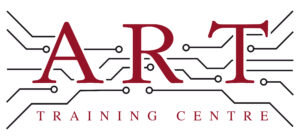Definition
Reballing is the process of replacing or repairing solder balls on a Ball Grid Array (BGA) component in electronics manufacturing. This technique is often necessary when solder balls become damaged or lose their connection due to thermal stress or physical impact. Reballing is a crucial aspect of rework, ensuring that electronic devices can function reliably after repair, and it is essential for maintaining the integrity of printed circuit boards (PCBs).
How It’s Used in the Industry
Reballing is applied in electronics assembly and repair to restore the functionality of BGA components. The process begins with the removal of the faulty BGA from the PCB using heat or a rework station. Once removed, the old solder balls are cleaned off, and a new stencil is aligned over the BGA pad. Fresh solder balls are then applied through the stencil, ensuring precise placement. The BGA is reattached to the PCB using a reflow oven, which melts the solder to create strong electrical connections. This method is vital for both technicians in training and experienced professionals, as it enhances skills in soldering and rework, contributing to better quality control and device longevity.
History & Origins
Reballing became common in electronics manufacturing in the late 1990s, coinciding with the rise of BGA packages in circuit design. As devices became more compact and complex, the need for reliable rework methods grew. The development of standards by organisations such as IPC (Institute of Printed Circuits) helped formalise the reballing process, ensuring consistency and quality in repairs. Advances in soldering technologies and materials also contributed to the importance of reballing, making it an essential skill in modern electronics repair.
Variations
There are several variations of reballing, including manual and automated methods. Manual reballing involves hand placement of solder balls, while automated processes use machines for precision and speed. Additionally, reballing can differ based on the type of solder used, such as lead-free or leaded solder, which affects the melting point and compatibility with various components. Understanding these variations is important for learners, as each method has its own advantages and applications in electronics repair.
Modern Applications
Today, reballing is widely used in electronics production and repair, particularly for surface mount technology (SMT) and advanced assembly. It is crucial for maintaining the quality and reliability of electronic devices, especially in sectors such as telecommunications and consumer electronics. Compliance with IPC standards ensures that reballing processes meet industry requirements, making it a vital skill for technicians. Furthermore, reballing is often included in professional training programs to equip learners with the necessary expertise for modern electronics manufacturing.
Practical Tips & Training
When working with reballing, it is essential to follow safety guidelines, such as wearing protective eyewear and handling solder materials correctly. Inspecting the BGA pads and solder balls for cleanliness and alignment is crucial for successful reballing. Useful tools include solder stencils, solder paste, and rework stations. Structured training and certification in reballing techniques are important for developing proficiency and ensuring compliance with industry standards, ultimately enhancing the quality of electronic repairs.


